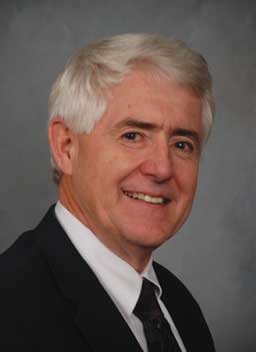It is often professed that those of us who enjoy sailing acquire the aura of reaching their destination at the very moment when the sails are hoisted and the last gasps of engine-noise fade into silence. It may be a quest for freedom from life’s modern stressors and pace which lie at the core of this, but mastering wind, water, and sail is not for the faint of heart and certainly not for the couch potato. Although a sailboat creeps across the water by comparison to a power craft, there is nothing slothful about the pace on deck during the racing fray or when the winds reach knockdown velocities. Tacking, jibing, constantly watching the water and sky for preludes of ever-changing conditions, sail trim, reefing, and the legion of potential deck situations must all be abruptly assessed and quickly attended by the adaptive sailor. Much like the veterinarian, the helmsman must instantaneously and logically consider solutions to every conceivable condition and follow with strategic action, thus alleviating impending disaster. The continuous mental and physical challenge associated with sailing is metaphorically akin to the present AASV member’s circumstance. Throughout our 40 years of existence, finding shelter in the gale has never been more “sine qua non.”
Like the food-supply veterinarian, ocean sailors often have destinations in mind when shoving off from the shore, but it is veritably the journey that matters above all – not just reaching some exotic island on a distant sea. Once arrived, the allure of the wind-filled sail and the captivating magnitude of the ocean once again restore and the journey re-charts. Connate to a veterinary career, these sailing treks take considerable planning and preparation, not just inspiration. Once the sailor is beyond the sight of land, survival takes precedence over comfort and amenities – constant study and planning are required. Much as modern technology has improved communication and safety at sea, there is still inherent danger and challenge. The summons of “blue water” is nonetheless as it was for the earliest mariner on ancient brine.
The semblances between standing at the helm while circumnavigating in a small craft powered only by wind and current and the recent tide of difficulties faced by animal agriculture bring to mind how each of us has always faced significant career perils along our passage. Even while our very existence continues to be threatened, we have, as always, proven to be resilient in commitment, calculated in courage, and practical in our judgments. Passive resistance will not be enough. Sailing the AASV ship is a proactive process and we are fortunate that at the helm is our professional staff, our “Captains Courageous.”
Novel H1N1 made its presence known in late April. Since the early days of media frenzy and misinformation, it has become apparent that postscriptive science isn’t equal to precedent knowledge. Much like planning and outfitting for the ocean voyage, we were in need of cargo to counter the tsunami of prejudice and criticism unfairly delivered upon innocent pork producers. Unfortunately, there had been no surveillance program for swine influenza, largely due to an inequitable research allotment which had favored the direct avian-to-human theory over gradual human adaptation. Thus, the avian H5N1 received all the attention as the next potential pandemic influenza. From the earliest information, it was apparent that the new flu was made up of genetic parts which had a viral evolutionary connection to currently circulating North American and Eurasian swine influenzas. This situation quickly escalated, and it became impossible to quell public concern without proof that this rapidly emerging pandemic virus was truly an adapted human influenza and that the modern pig industry had no direct connection to its appearance. It was too little too late. The opponents of modern agriculture had a field day.
Learning from the past and looking to the future does offer a glimmer of hope, providing we as individual members actively promote truth in reporting and government support for agricultural research, and if each of us pursues greater political involvement. Remember it is the squeaky hinge that receives the oil. As an association, we are engaged in many of the issue debates upon which the future of animal agriculture hinge. But this will not suffice. Although we are small in numbers, this cannot be an excuse for a lack of spirit or willpower. Novel H1N1 will eventually be forgotten by the media, but not before another rake across the mast and following broadsides. Likewise, this isn’t the last issue we will collectively face this year. Antimicrobial use in our industry is in question. Many believe that prudent use of antimicrobials in livestock can be accomplished only by following the human prescription model. Many believe growth-promoting antimicrobial use in livestock is largely responsible for resistance issues in human infections. Current research does not reflect this opinion. Remain proactive and arm yourself with scientific knowledge. Communicate the facts from the grass roots to Washington. When all else fails, grab the grappling hooks and cutlass – prepare to board.
--

